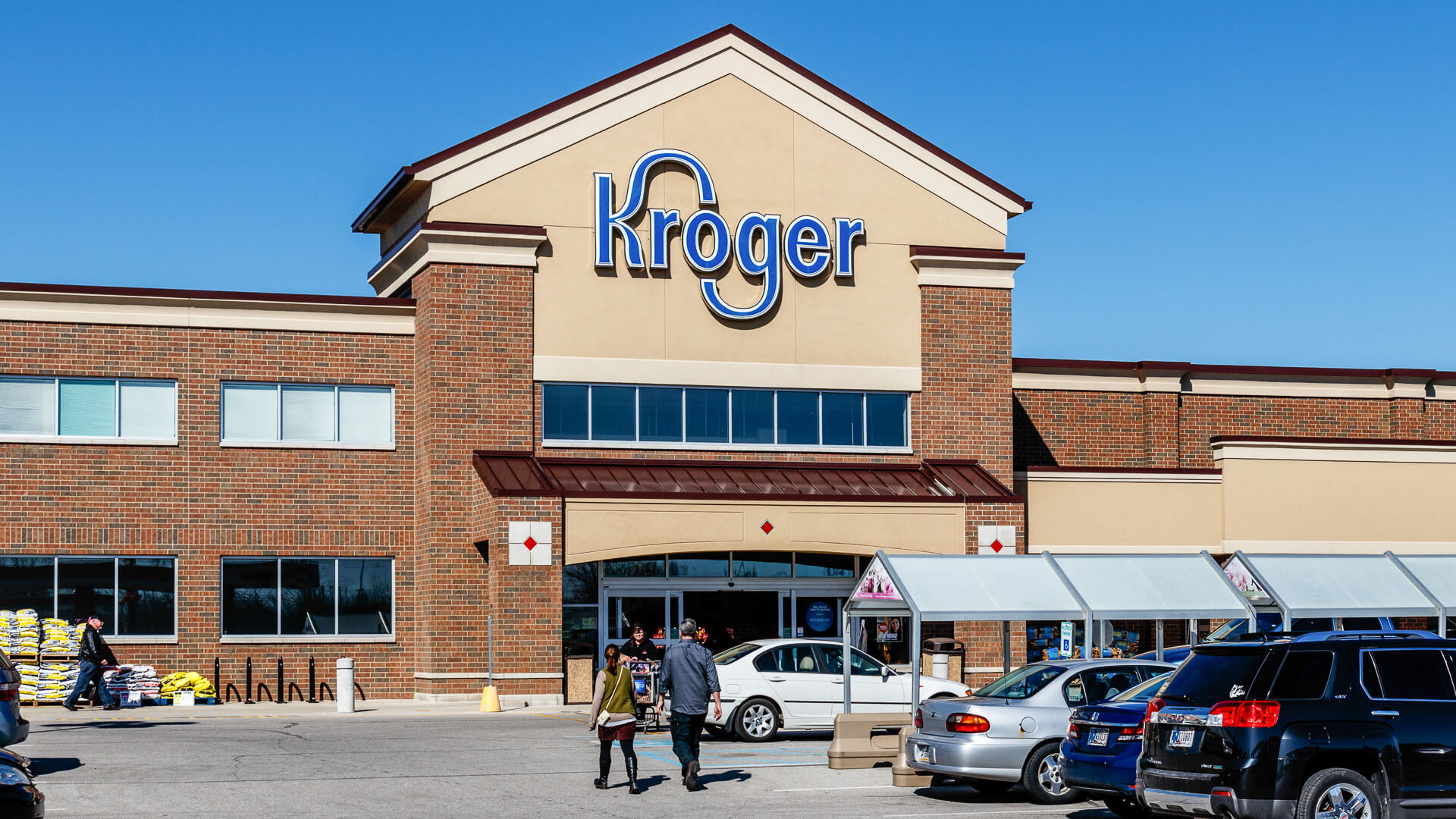Kroger is one of the largest retail companies in the world, and the largest supermarket chain in the United States. The company was founded in 1883 in Cincinnati, Ohio, by Bernard Kroger, and has since expanded to operate over 2,849 grocery stores across the US, with additional stores in Canada and the UK.
The company employs more than 465,000 associates. In 2022, Kroger’s total revenue was $142.9 billion, making it the third-largest retailer in the United States after Walmart and Amazon. In 2021, Kroger was ranked #23 on the Fortune 500 list of the largest companies in the United States by total revenue.
Kroger offers a wide range of products, including groceries, pharmacy and health products, general merchandise, and fuel. The company also operates several subsidiaries, including Ralphs, Fred Meyer, and Harris Teeter.
In addition to its brick-and-mortar stores, Kroger has also expanded its online presence with the launch of its Kroger Ship program, which delivers groceries and household essentials directly to customers’ doors. The company is also exploring the use of technology in its stores, with the introduction of automated checkout systems and the testing of self-driving delivery vehicles.
Kroger has a strong commitment to sustainability, with goals to reduce waste, greenhouse gas emissions, and water usage. The company has also established partnerships with local farmers and suppliers to promote locally sourced products and support local communities.
Founding History of Krogers
Kroger was founded in 1883 by Bernard Kroger in Cincinnati, Ohio. At the age of 23, Kroger invested his life savings of $372 to open a grocery store in downtown Cincinnati. His first store was located at 66 Pearl Street, and he focused on offering quality products at low prices.
Kroger’s business philosophy was based on the principle of “satisfaction guaranteed” – if a customer was dissatisfied with a product, Kroger would replace it or refund the purchase price. This customer-first approach helped him build a loyal following and grow his business.
Within a few years, Kroger had opened several additional stores in Cincinnati and began expanding into other cities. In 1902, the company incorporated as The Kroger Grocery and Baking Company, and by 1929, it had expanded to operate over 5,500 stores in 31 states.
Throughout its history, Kroger has been known for innovation and a willingness to embrace new technologies. In 1930, the company became one of the first grocery chains to introduce self-service shopping, and in the 1970s, it was an early adopter of barcode scanning technology.
In addition to its focus on innovation, Kroger has also prioritized its commitment to customers and communities. The company has a long-standing reputation for quality products and low prices, and it has established partnerships with local farmers and suppliers to promote locally sourced products and support local communities.
Today, Kroger is a Fortune 500 company and one of the largest retail chains in the world. Despite its growth and success, the company has remained true to Bernard Kroger’s original vision of providing high-quality products at affordable prices while putting the needs of its customers first.
Kroger subsidiaries and brands
Kroger operates several subsidiaries and brands, each offering a unique set of products and services to customers. Here are some of Kroger’s notable subsidiaries and brands:
Ralphs: Ralphs is a supermarket chain operating in Southern California that offers groceries, pharmacy services, and a variety of other products.
Fred Meyer: Fred Meyer is a hypermarket chain operating in the Pacific Northwest that offers groceries, home goods, electronics, and more.
Harris Teeter: Harris Teeter is a supermarket chain operating in the Southeastern United States that offers groceries, pharmacy services, and a variety of other products.
Kroger Health: Kroger Health is a subsidiary that provides health and wellness products and services to customers, including pharmacy services, nutrition counseling, and immunizations.
Simple Truth: Simple Truth is a Kroger brand that offers a variety of natural and organic products, including food, household items, and personal care products.
Private Selection: Private Selection is a Kroger brand that offers a variety of premium food and beverage products, including gourmet snacks, artisanal cheeses, and specialty sauces.
Murray’s Cheese: Murray’s Cheese is a specialty cheese shop that operates within some Kroger stores and offers a wide selection of cheeses from around the world.
Kroger Ship: Kroger Ship is an online grocery delivery service that delivers groceries and household essentials directly to customers’ doors.
These subsidiaries and brands help Kroger offer a diverse range of products and services to customers, catering to their individual needs and preferences. They also showcase Kroger’s commitment to innovation and adapting to changing consumer demands.
Kroger Marketing Strategies
Kroger’s marketing strategies are focused on delivering value to its customers, building brand loyalty, and creating a personalized shopping experience. Here are some of the key elements of Kroger’s marketing strategy:
Customer Engagement:
Kroger’s customer engagement strategy is centered around the Kroger Plus loyalty program, which offers customers personalized promotions, discounts, and offers based on their shopping behavior. Kroger uses data analytics to gain insights into customer preferences and behavior, which is then used to create targeted marketing campaigns. For example, if a customer regularly purchases organic produce, Kroger might offer them a discount on their next purchase of organic produce. Kroger also uses email marketing to send personalized promotions to customers and has an opt-in text messaging service for customers to receive alerts about special deals.
Digital Marketing:
Kroger’s digital marketing strategy is focused on creating a seamless shopping experience for customers across all channels. The company’s mobile app allows customers to access digital coupons, view weekly ads, and place orders for delivery or pickup. The app also includes features like recipe recommendations, shopping lists, and personalized deals. Kroger also uses social media to engage with customers and promote its products and services. The company has an active presence on Facebook, Twitter, and Instagram, where it shares recipe ideas, new product launches, and promotions.
In-store Marketing:
Kroger’s in-store marketing strategy is focused on creating an engaging and personalized shopping experience for customers. The company uses creative signage and displays to promote new products and special promotions. For example, Kroger might create a display of products from a local supplier to promote the company’s commitment to locally sourced products. Kroger’s private label brands, such as Simple Truth and Private Selection, are also prominently displayed in stores, with eye-catching packaging and displays.
Community Engagement:
Kroger’s community engagement strategy is focused on supporting local communities and creating a positive impact. The company partners with local farmers and suppliers to promote locally sourced products, which not only supports local businesses but also promotes sustainability. Kroger also hosts community events and programs, such as food drives, wellness programs, and educational events. By supporting the communities it serves, Kroger is able to build trust and loyalty with its customers.
Brand Partnerships:
Kroger’s brand partnership strategy is focused on expanding its product offerings and providing customers with new and innovative products. The company has established partnerships with leading brands in a variety of industries, such as fashion, beauty, and home goods. For example, Kroger has partnered with apparel brand ThredUp to offer secondhand clothing in select stores, and has partnered with Walgreens to offer health and wellness products. These partnerships not only offer customers new products and services, but also help Kroger stay competitive in the marketplace.
Overall, Kroger’s marketing strategy is focused on delivering value to its customers, building brand loyalty, and creating a personalized shopping experience. By engaging with customers on a personal level, leveraging digital and in-store channels, and partnering with leading brands, Kroger has established itself as a leading retailer in the United States.
Kroger Brand Campaigns
Kroger has launched several successful brand campaigns over the years that have helped to position the company as a leader in the grocery industry. Here are a few examples of some of Kroger’s notable brand campaigns:
“Fresh for Everyone”
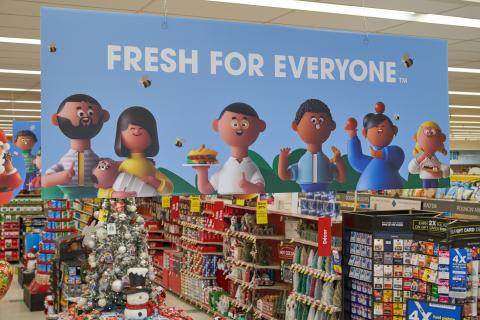
In 2019, Kroger launched its “Fresh for Everyone” brand campaign, which was focused on highlighting the company’s commitment to offering fresh, affordable, and accessible food to all customers. The campaign included TV ads, digital ads, and social media content, and featured real Kroger customers and employees. The campaign also included a new logo and updated branding, with a focus on bright colors and fresh produce imagery.
“We’re Local”
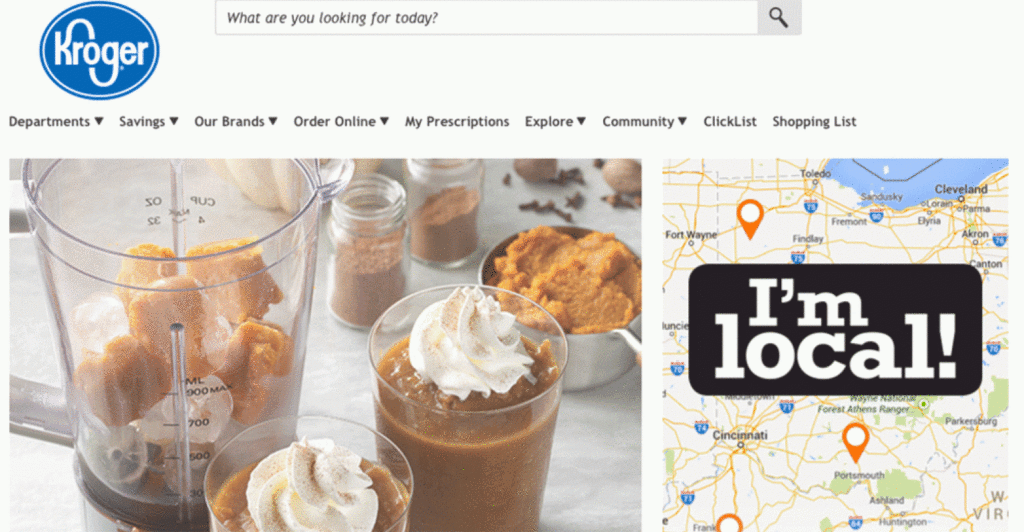
Kroger’s “We’re Local” campaign was launched in 2017 and was focused on promoting the company’s commitment to supporting local communities and offering locally sourced products. The campaign included TV ads, digital ads, and in-store signage, and featured local farmers and suppliers. The campaign helped to reinforce Kroger’s brand values of sustainability and community engagement.
“OptUp”
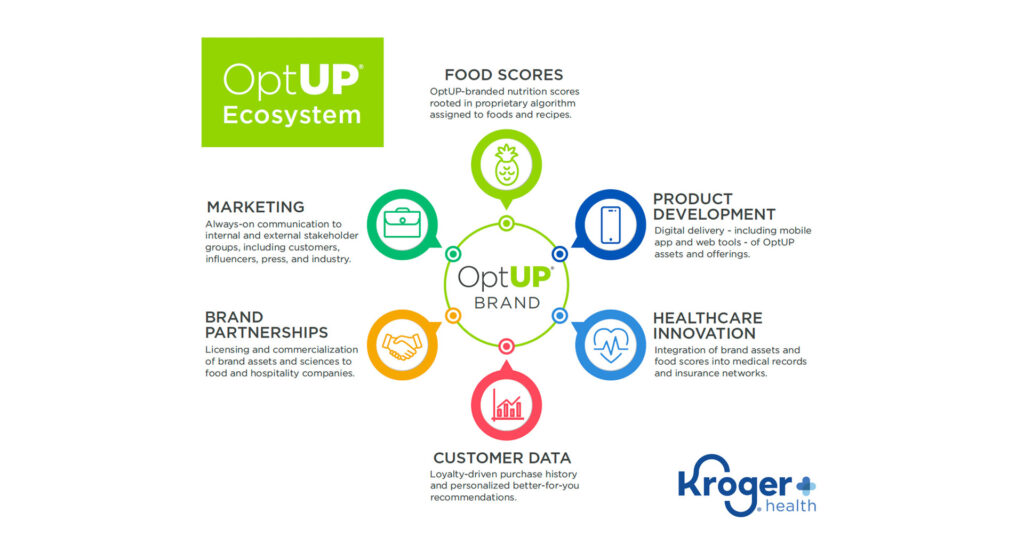
Kroger’s “OptUp” campaign was launched in 2018 and was focused on promoting healthy eating and wellness. The campaign included a mobile app that allowed customers to track their food choices and receive personalized recommendations for healthier options. The campaign also included in-store signage and promotions for healthy food choices. The “OptUp” campaign helped to position Kroger as a leader in the health and wellness space, and demonstrated the company’s commitment to promoting healthy lifestyles for its customers.
“Zero Hunger | Zero Waste”
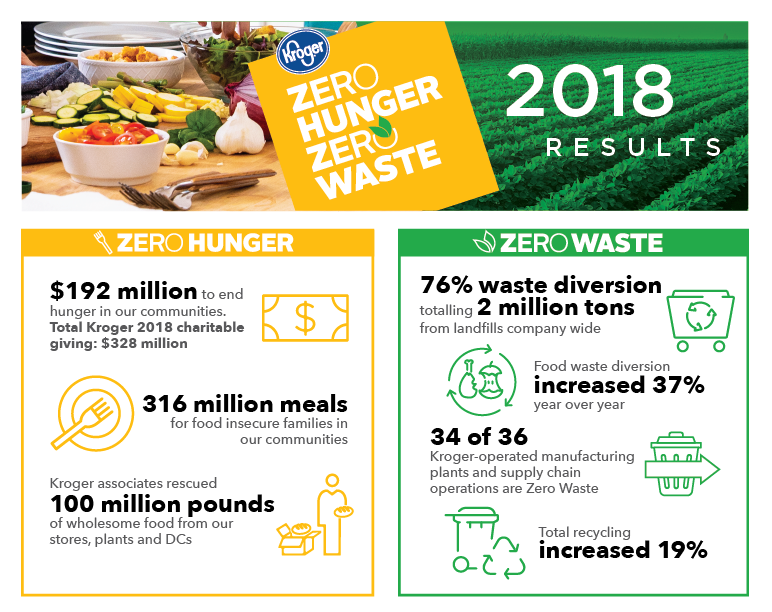
Kroger’s “Zero Hunger | Zero Waste” campaign is an ongoing initiative focused on eliminating food waste and ending hunger in local communities. The campaign includes a range of initiatives, such as donating surplus food to local food banks, reducing packaging waste, and supporting community programs focused on food access. The campaign has received national recognition and has helped to position Kroger as a leader in sustainability and social responsibility.
Overall, Kroger’s brand campaigns are focused on promoting the company’s core values of affordability, accessibility, community engagement, sustainability, and wellness. By engaging with customers through a range of channels, including TV, digital, and in-store, Kroger has been able to build brand awareness and loyalty, while also driving sales and growth.
Also Read: Marketing Strategies Of Home Depot
SWOT Analysis of Kroger
SWOT analysis is a framework used to assess the strengths, weaknesses, opportunities, and threats of a company or organization. Here’s a brief SWOT analysis for Kroger:
Strengths:
Strong brand recognition and customer loyalty: Kroger is one of the most recognizable grocery store brands in the United States, and the company has built a strong reputation for offering quality products and services at affordable prices. This has helped to create a high degree of customer loyalty, which in turn has contributed to Kroger’s ongoing success.
Extensive network of stores: With over 2,700 locations across the US, Kroger has a significant physical presence in many communities. This allows the company to reach a broad customer base and take advantage of economies of scale in areas such as purchasing and distribution.
Diverse range of products and services: Kroger offers a wide range of products and services, including grocery, pharmacy, and fuel. This helps the company to attract a diverse customer base and generate revenue across multiple product lines.
Strong financial performance: Kroger has consistently reported strong financial results, with annual revenues of over $120 billion and a net income of over $2 billion.
Weaknesses:
High competition: The grocery industry is highly competitive, with many other major players vying for market share. This can make it difficult for Kroger to differentiate itself and maintain a competitive edge.
Dependence on US market: Kroger is largely dependent on the US market, which makes it vulnerable to changes in the US economy and consumer trends. This can pose risks to the company’s growth and financial performance.
Limited international presence: Kroger has a limited international presence, which means it may be missing out on opportunities in other markets.
Labor issues: Like many large retailers, Kroger has faced labor issues such as unionization efforts and strikes, which can disrupt operations and harm the company’s reputation.
Opportunities:
E-commerce: The growth of online shopping presents an opportunity for Kroger to expand its digital capabilities and reach new customers.
Health and wellness: The increasing focus on health and wellness presents an opportunity for Kroger to expand its offerings in areas such as organic and natural foods, health supplements, and fitness products.
Acquisitions: Kroger could pursue acquisitions of smaller grocery chains or complementary businesses to expand its reach and product offerings.
International expansion: Kroger could explore opportunities to expand its operations into international markets.
Threats:
Competition from other retailers: The grocery industry is highly competitive, with major players such as Walmart, Target, and Amazon competing for market share. This can make it difficult for Kroger to maintain its position in the market.
Changing consumer preferences: Consumer preferences and trends can change rapidly, which can make it difficult for Kroger to keep up with changing demands.
Economic conditions: Changes in the US economy, such as recessions or changes in consumer spending habits, can impact Kroger’s financial performance.
Regulatory risks: Kroger is subject to a range of regulatory risks, including food safety regulations and labor laws, which can impact the company’s operations and profitability.
Growth and Revenue of Kroger
Kroger is one of the largest grocery store chains in the United States, with a significant physical presence in many communities. The company has experienced consistent growth over the years and has reported strong financial results.
In terms of revenue, Kroger’s annual revenue has consistently been above $100 billion for the past several years. In 2020, the company reported total sales of $132.5 billion, an increase of 8.4% compared to the previous year. This growth was driven in part by increased demand for groceries during the COVID-19 pandemic, as well as the company’s continued expansion of its digital capabilities.
Kroger has also made significant investments in e-commerce and digital technology in recent years. The company’s online sales grew by over 116% in 2020, driven by increased demand for grocery delivery and pickup services. In addition, Kroger has expanded its digital offerings through the launch of its own direct-to-consumer brand, Simple Truth, and the acquisition of meal kit company Home Chef.
Kroger has also been focused on expanding its physical footprint through store openings and renovations. The company has opened several new stores in recent years, particularly in urban areas, and has also invested in renovating existing stores to provide a better shopping experience for customers.
Overall, Kroger’s growth and revenue have been driven by a combination of factors, including strong brand recognition and customer loyalty, a diverse range of products and services, strategic investments in e-commerce and technology, and a focus on expanding its physical footprint. Despite challenges such as intense competition and economic uncertainty, the company has continued to report strong financial results and remains a major player in the US grocery industry.
Future of Kroger
One of the key factors is the continued growth of e-commerce and digital technology. Kroger has invested heavily in these areas in recent years, and this trend is likely to continue as more customers seek out online shopping options. The company’s ability to successfully integrate digital technology into its operations and provide a seamless shopping experience across both online and in-store channels will be crucial for its future success.
Another important factor is competition from other grocery retailers, both traditional brick-and-mortar stores and online-only options. Kroger will need to continue to differentiate itself through its product offerings, customer service, and overall shopping experience to remain competitive.
In addition, consumer preferences and shopping habits are always evolving, and Kroger will need to stay attuned to these changes and adapt its strategy accordingly. For example, there may be increasing demand for plant-based and organic products, and Kroger may need to adjust its product offerings to meet these changing preferences.
Overall, the future of Kroger will depend on its ability to adapt to changing market conditions, leverage its strengths as a well-established and trusted brand, and continue to provide high-quality products and services to its customers.
To read more content like this, subscribe to our newsletter
